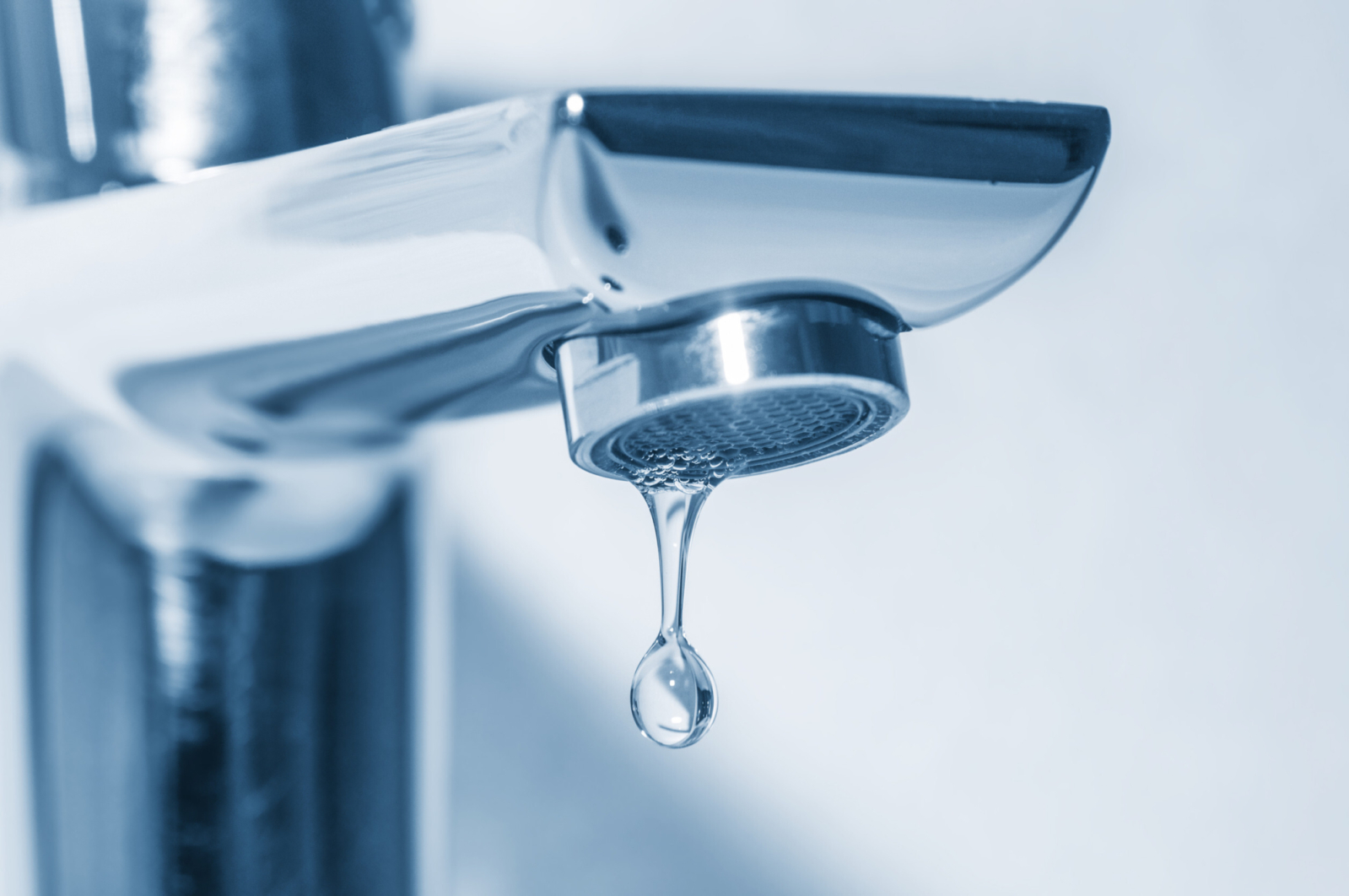How to Properly Drip a Water Faucet During Prolonged Cold Spells to Prevent Freezing Pipes

Cold weather is here and it’s important to be prepared. Frozen pipes can cause significant damage, expensive repairs, and unnecessary stress. But what can you do to get ahead of a potentially devastating problem? Fortunately, a simple and proactive step, like dripping your water faucets during prolonged cold spells, can save you from these headaches. Our guide explains how to do it properly and answers common questions to help you safeguard your home from devastating water damage.
Why Drip a Faucet?
When temperatures drop below freezing, water inside your pipes can freeze and expand, potentially causing pipes to burst. Allowing water to drip keeps it moving and reduces the risk of freezing and the associated damage that comes with it.
Which Faucet Should I Drip?
Focus on the faucets connected to pipes most vulnerable to freezing, like those on exterior walls, in unheated areas (like basements or attics), or farthest from your water main. These areas are more exposed to cold temperatures and have the highest risk of freezing. If you’re unsure, dripping a faucet near an exterior wall is a smart step.
Which Do I Run, Hot or Cold Water?
Not sure? Let both hot and cold water drip. Running both ensures that pipes connected to the hot water heater and cold water supply remain active, preventing either system from freezing. This is especially important for mixed systems where hot and cold lines are close together.
How Much Water Should I Run?
A steady drip is sufficient; it doesn’t need to be a full stream. Try a consistent drip that resembles that of a leaky faucet—about one drip per second. This small amount is enough to keep water moving and prevent freezing pipes.
How Long Should I Let the Water Drip?
Keep the water dripping as long as freezing temperatures persist, particularly overnight when temperatures typically drop further. It’s better to maintain a continuous drip rather than turning it on and off, as sudden freezes can occur quickly making it too late.
Isn’t It Expensive to Let the Faucet Drip?
While it’s true that dripping a faucet slightly increases your water bill, the cost is minimal compared to the expense of repairing burst pipes. Another consideration is that many regions often have water conservation initiatives, so consider capturing the dripping water in a container to reuse for plants, cleaning, or other household tasks.
Can’t I Just Open the Cabinet Doors?
Opening cabinet doors is helpful but not sufficient on its own. It allows warm air to circulate around the pipes, which can prevent freezing in mild conditions. However, during prolonged cold spells, combining this with a dripping faucet provides more comprehensive protection all around. In short, open cabinet doors under sinks on exterior walls for added warmth and safety.
Additional Tips for Preventing Frozen Pipes
Insulate Pipes: Wrap pipes in unheated areas with foam pipe insulation. This is especially crucial for pipes in attics, garages, and crawl spaces.
Seal Drafts: Check for drafts near pipes, especially around windows, doors, and exterior walls. Use weather stripping or caulk to block cold air.
Disconnect Outdoor Hoses: Remove garden hoses and cover outdoor faucets with insulated covers.
Set the Thermostat: Maintain a consistent indoor temperature, even when you’re away. Keep it at least 55°F to ensure pipes stay warm.
Know the Main Shutoff Valve: In case a pipe does freeze and burst, knowing how to shut off your water quickly can minimize damage.
Why Dripping Works
Water freezes when it’s stationary and exposed to freezing temperatures for an extended time. By dripping water, you keep it moving, making it less likely to freeze. It’s that simple! This easy preventative action can protect your pipes, your home, and your peace of mind.
How ALL-CLEAN USA Can Help
Additionally, count on ALL-CLEAN USA's PRIME Promise program, expertly designed to reduce property downtime, income loss, and repair and reconstruction costs following a property loss. Taking a few of these preventative steps during prolonged cold spells can save you from the stress and expense of dealing with frozen pipes. Dripping your faucet properly, insulating pipes, and ensuring your home is draft-free are all effective strategies. By following these tips and understanding the importance of each action, you can keep your pipes safe and your home running smoothly throughout the winter.
Protecting your home doesn’t have to be complicated—sometimes, all it takes is a steady drip. Should you ever need us, we are here for you 24 hours a day/365 days a year! Contact us today for immediate assistance!


